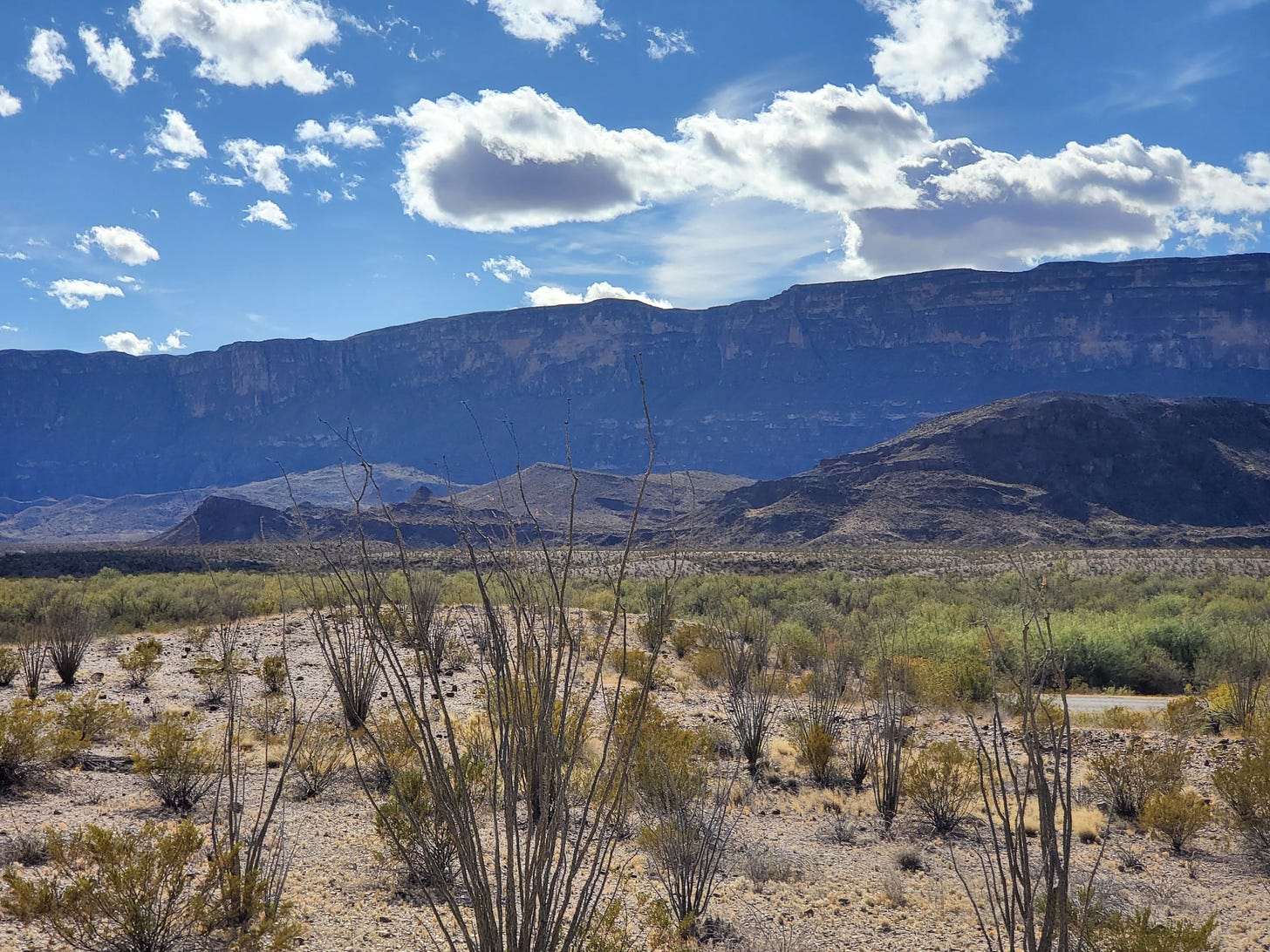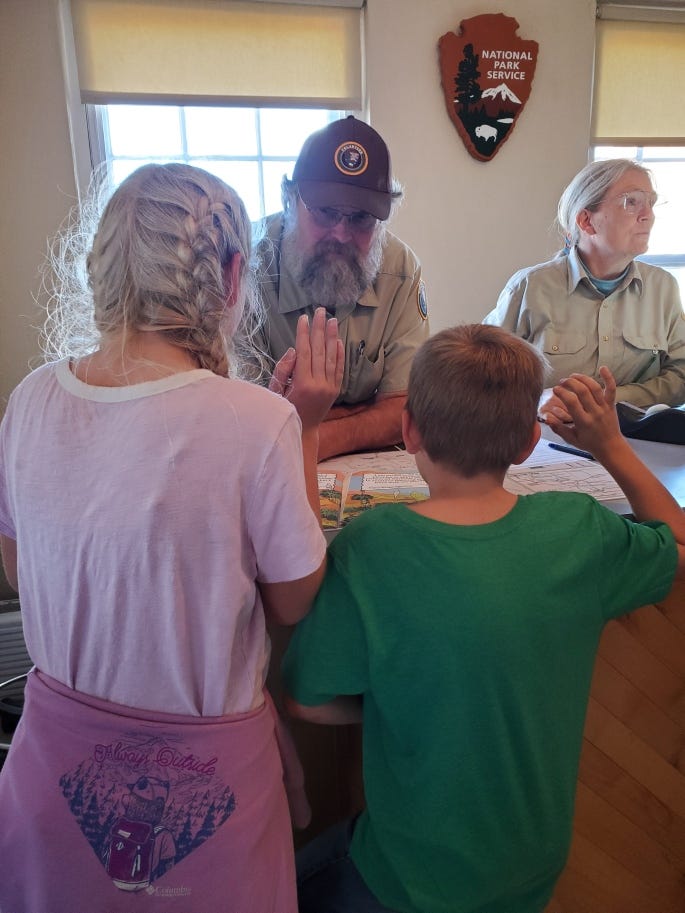Canyons, Rocks, and History
Day two of Campsmas 2019 in Big Bend National Park
In Mission: Wanderlust, I write and podcast about our family’s travel adventures and the things that we have learned along the way.
For three of the six years that we lived in Texas, we celebrated Christmas break with a camping trip. As I go back through my old blog archives and move them to my Substack, I will be revising some of my older blog pieces that I wrote about these travels. Please enjoy my reflections on our second day in Big Bend National Park. The original post can be found here at Accepting the Unexpected Journey.
The first time we visited Big Bend, the western region wasn’t even on our radar. WE visited during the 2018 government shutdown, so the first road leading down to Santa Elena Canyon was closed and with less than a full day to explore, it just didn’t seem like a responsible use of time.
This time we weren’t going to miss it.
Old Maverick Road is the first road once visitors enter the national park, but because it is an unimproved road, it is certainly the road less traveled. While it is technically a two-lane road and significantly less curvy with fewer dramatic climbs and descents than we’d experienced on Old Ore Road, the 25-mph speed limit occasionally felt a little generous. We enjoyed the scenic route, which revealed intimate views of desert landscapes and hidden gems such as Luna’s Jacal, the remains of a house that had been built by a man named Gilberto Luna. Long since abandoned, it is one of many historic reminders of the long and desolate history of the Big Bend region.

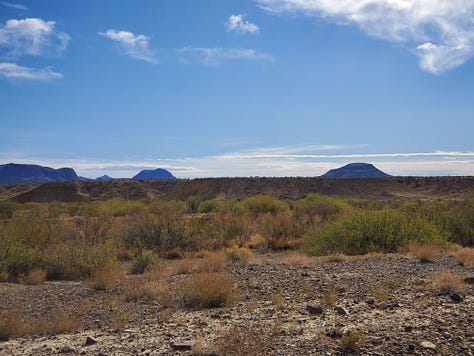
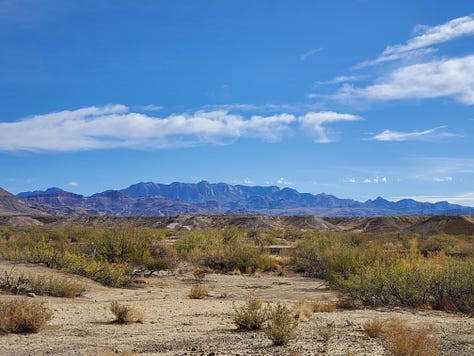
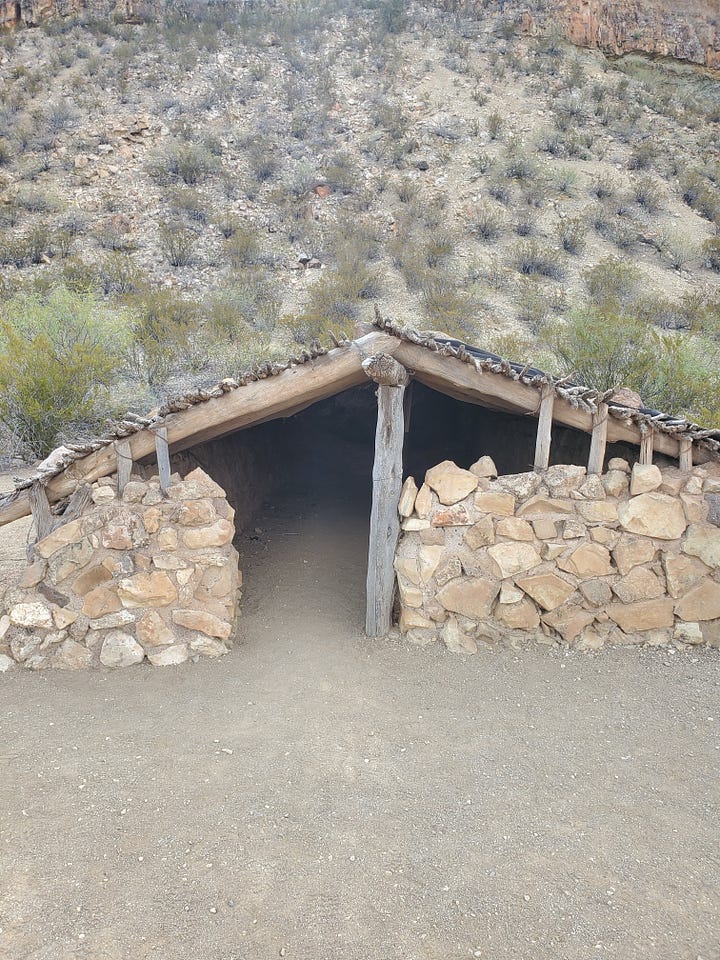
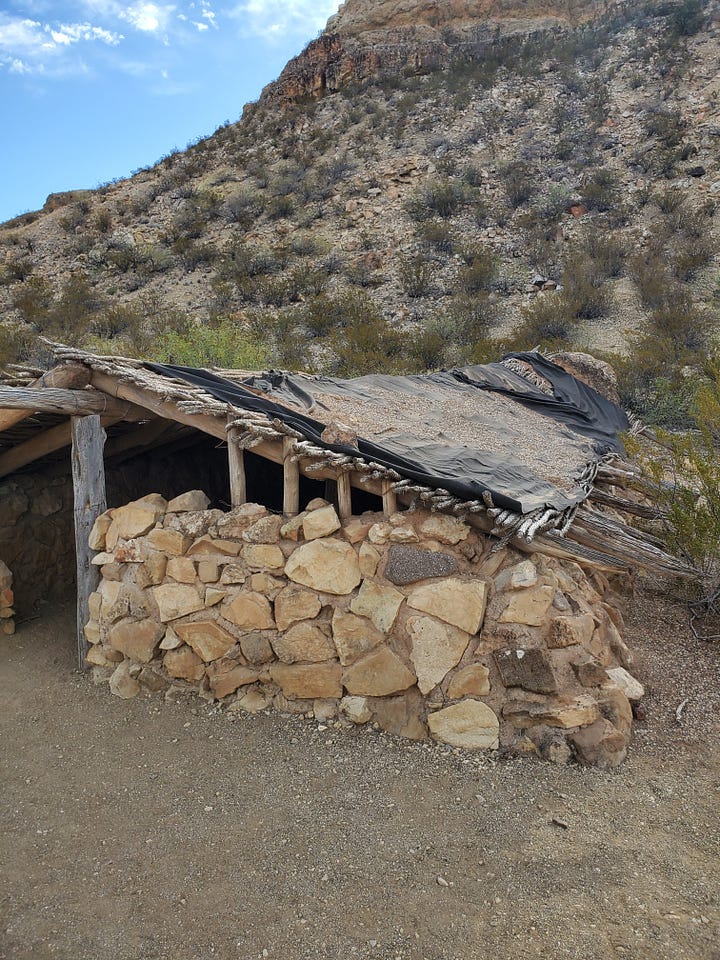
We eventually met up with the Ross Maxwell Scenic Drive and turned towards Santa Elena Canyon, which is right along the Rio Grande. We were anticipating a simple 1.6-mile hike along the canyon. After all, the park newspaper rates it as an easy trail. The beginning of the trail is supposed to be a walk across the typically dry Terlingua Creek with a gradual incline up the bank to the path along the river.
Except when we visited the water was high and the creek was flooded, meaning the usual entrance to the trail was closed to all but the bravest souls willing to cross a cold creek that was above most adult knees.
Our fellow park visitors had found another way up to the path.
I’m not usually a proponent of making one’s own path in any park (because of the potential damage to habitat and the lack of guarantee of safety) and it doesn’t always work in our favor.1 But by the time we completed the treacherous climb up the bank over the packed dirt, rocks, and vegetation, it appeared that we were on an actual path. Or at least what had at one point been an actual path. The start was difficult, but the resulting hike was worth the initial challenge.
We walked past river vegetation, climbed up stairs and a ramp, and then descended into the canyon, walking along the sandy path past reeds, oversized river plants, and boulders that called to our children, begging to be climbed. Along the way multiple people commented on our family’s abundance of Michigan gear, once again proving to Jeff that Michigan people are everywhere. Our introverted selves easily conversed with one fellow traveler after another, some asking where we were from (something had to explain three out of four wearing Michigan apparel), others sharing the common bond of love for hiking the national parks. Both kids challenged their limits by repeatedly begging to climb another oversized rock, our daughter getting stuck once and needing to be helped by a stranger because she didn’t realize that her height didn’t match the gap between the two rocks she had chosen for climbing, making it difficult to get down.

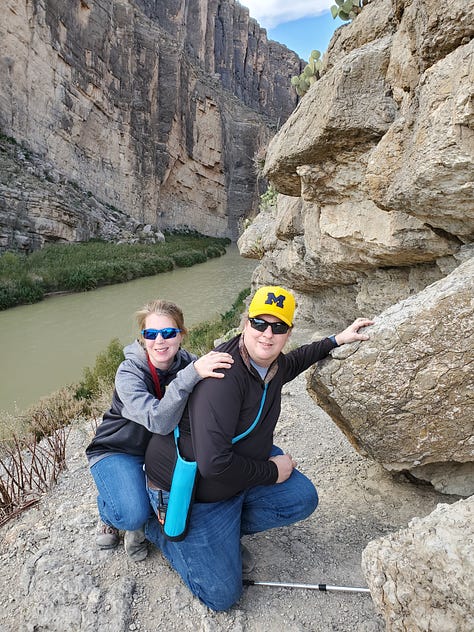
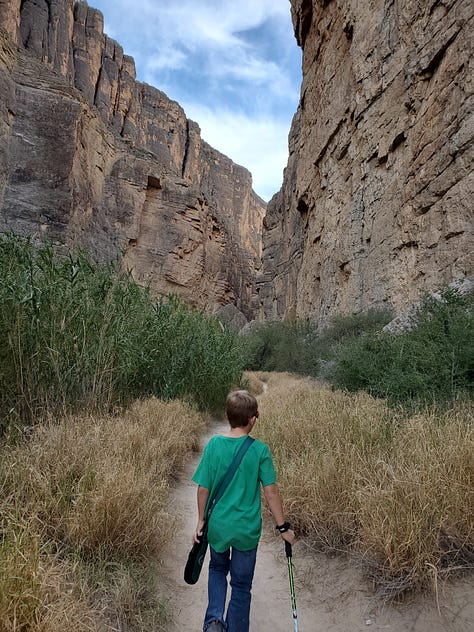
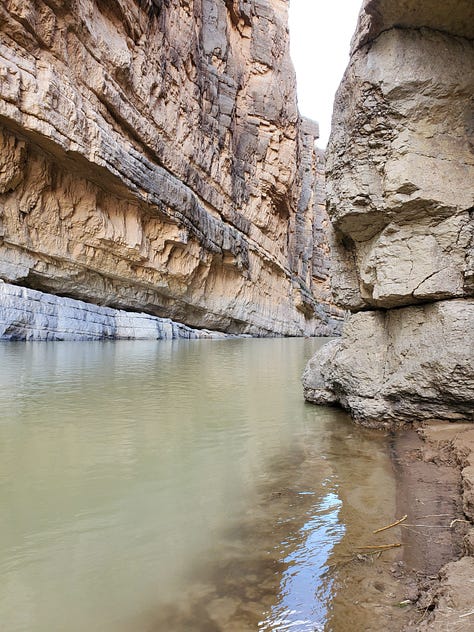

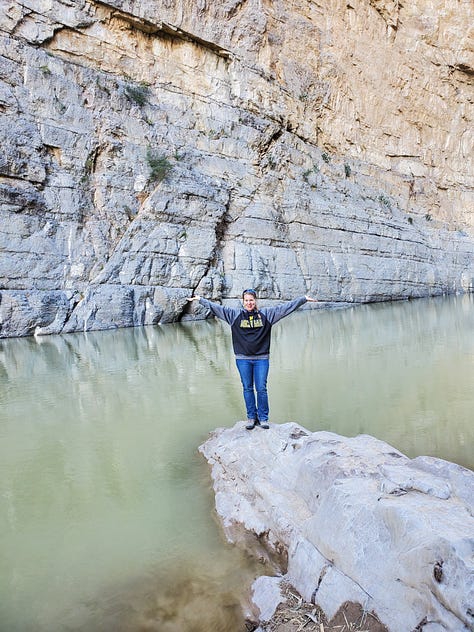
When we returned to the car nearly an hour and a half later, we all felt pretty accomplished and ready for lunch. Then it was time for the scenic drive up to Castolon.
When we got to the Castolon visitor center, where the kids got sworn in for their eighth Junior Ranger badge of 2019, we discovered that a recent forest fire (May 2019) had destroyed two of the historic buildings in the complex. The story of the fire helped to explain some of the burned vegetation that we saw on our way up the road.
Each visitor center in Big Bend is unique, containing different information and a different focus, depending on the location. Panther Junction focuses on the geology of the region, but Castolon is housed in actual historic buildings that have been there since the La Harmonia Company established itself there in the 1910s, primarily to produce cotton and serve as a trading post. We toured Magdalena’s House and walked around the Alvino House. I also took pictures of the burned barracks that were affected by the May 2019 fire.
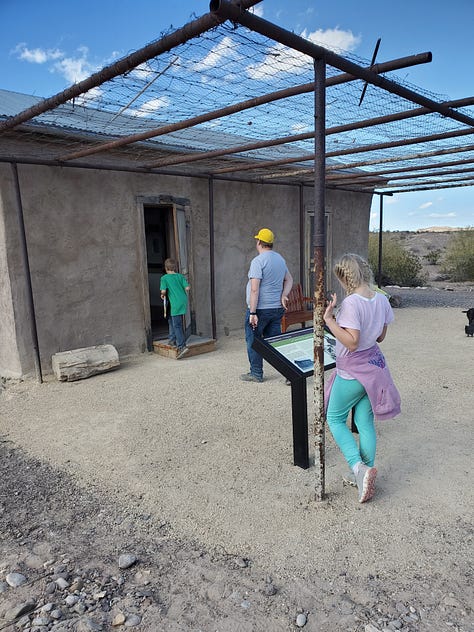
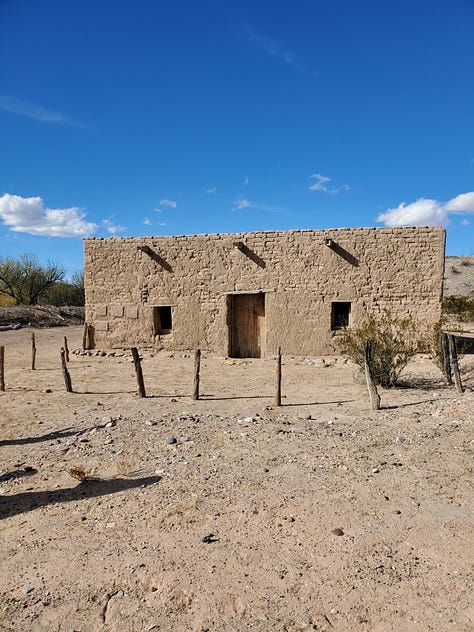

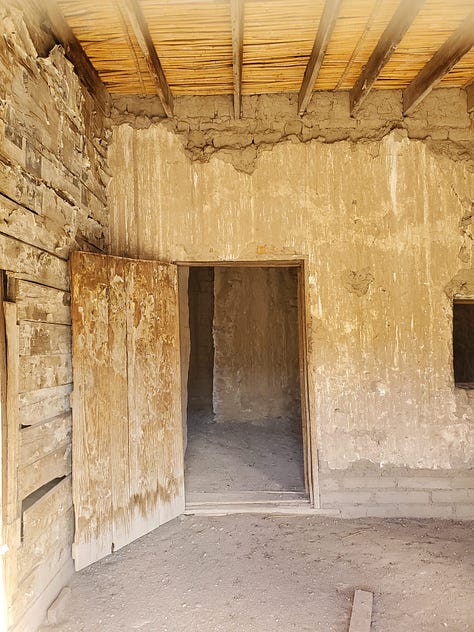
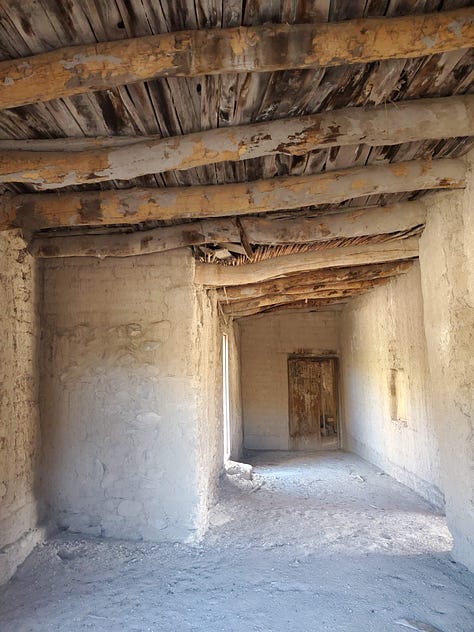
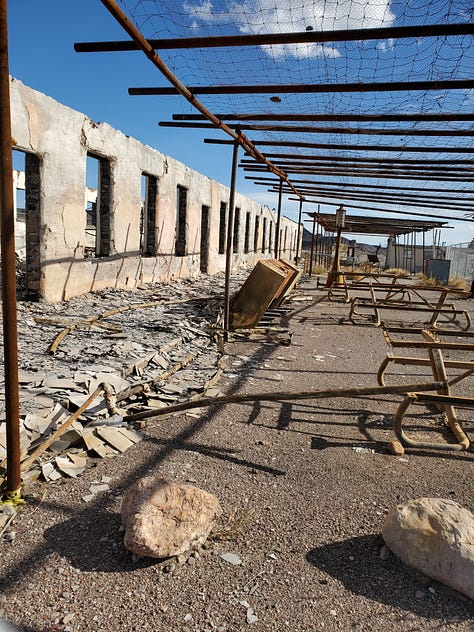
By the time we left Castolon, the kids made it clear that they were ready to take a break and I had to let go of my desire to do one more short hike. Jeff and I had plans to return to the park for a nighttime astronomy program with the rangers, so we gladly returned to Terlingua where we could take care of our dogs and feed the family before heading back into the park. While it was a quick turn-around, we managed to get everything done before we needed to drive back towards Panther Junction, where park rangers were prepared to tell us about the night sky.
Big Bend National Park has been rated the best place in the continental United States to stargaze. With nearly no light pollution from the surrounding area and careful measures taken by the park staff, it has earned its top rating for being a certified dark sky park. By the time we followed the red rope lighting to the parking area behind the visitor center and put down our chairs, we were joined by a sizable crowd of fellow park visitors who also wanted to learn from the rangers. (Note to reader: I know that I have said this before, but if you are ever in a state or national park and there is a ranger program that sounds even remotely interesting, do it. It is sure to be full of lessons that you and your kids, especially your kids, will remember for years to come.)
We listened as the lead ranger discussed constellations, satellites, star systems, and used a super laser pointer to show us where everything was in the night sky (despite numerous tutorials, I still fail to see constellations, but it was nice to listen to someone who can identify them for me). Our daughter volunteered to play the part of the sun in a demonstration of the location of planets in our solar system and we all got to look through a telescope to view the craters on the crescent moon. As an added bonus, I got to talk to another park ranger about nighttime photography (and she might have convinced me that I may someday have to upgrade my camera). While we were told that the program could last up to two hours, we were very happy to return to the truck just over an hour after our arrival, the desert temperatures dropping into the 40s by the time we started the drive home.
It was another busy, productive, yet reasonable day in the park. No one felt like they hadn’t accomplished all that they wanted for the day, but with one day left in the park, time would tell if we would be able to head home to Houston saying that we had done everything that we set out to do in Big Bend National Park.
Please “like” by clicking on the ❤ and share this post with your friends so that others can join me on the journey.




